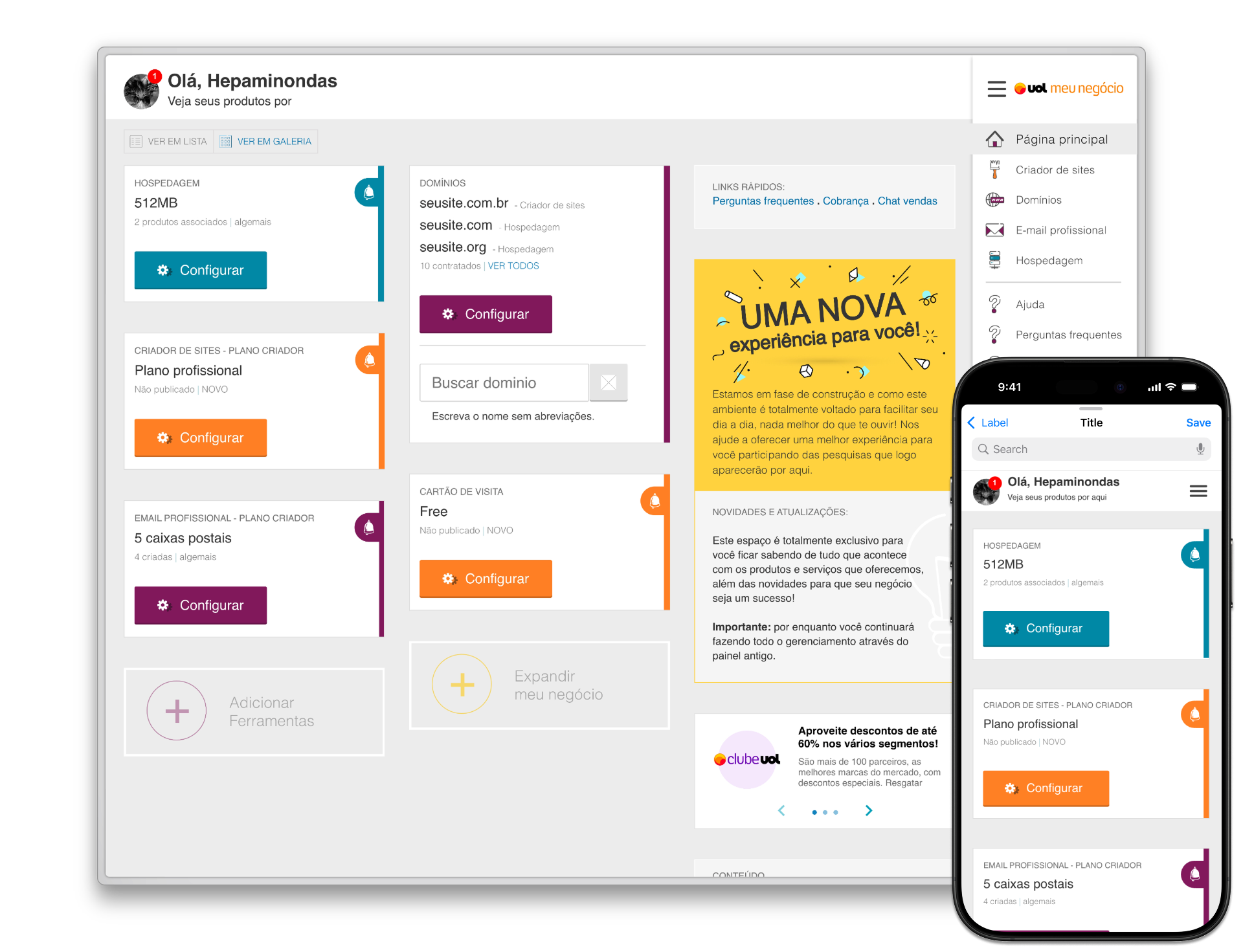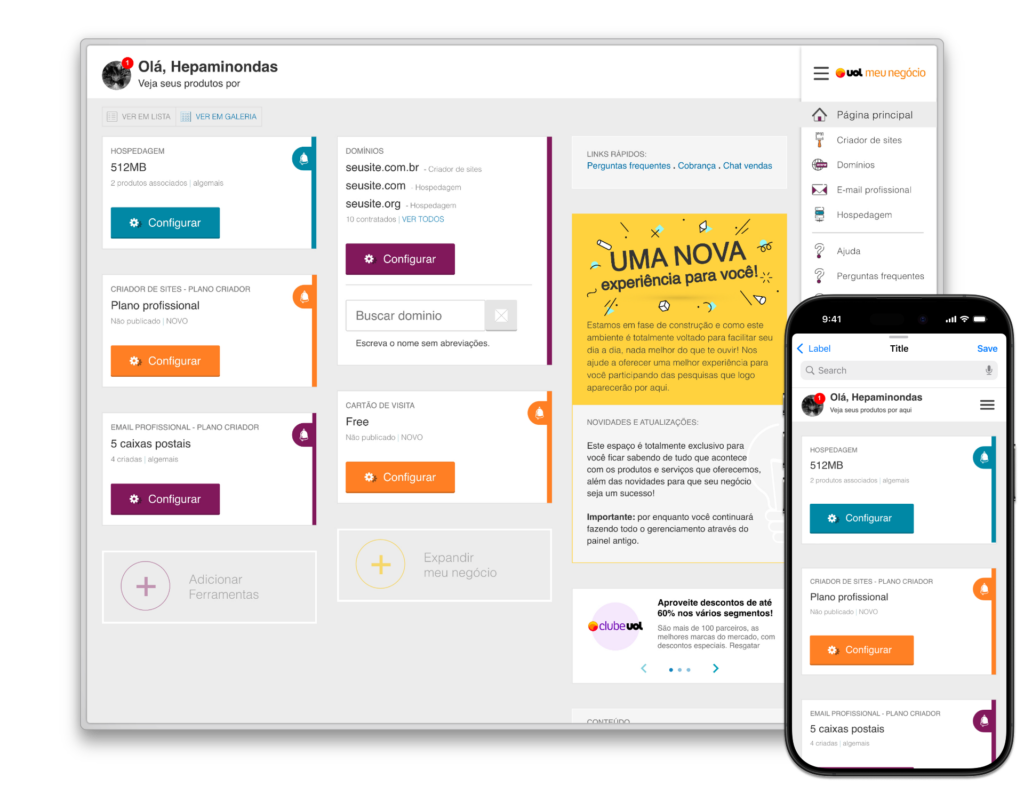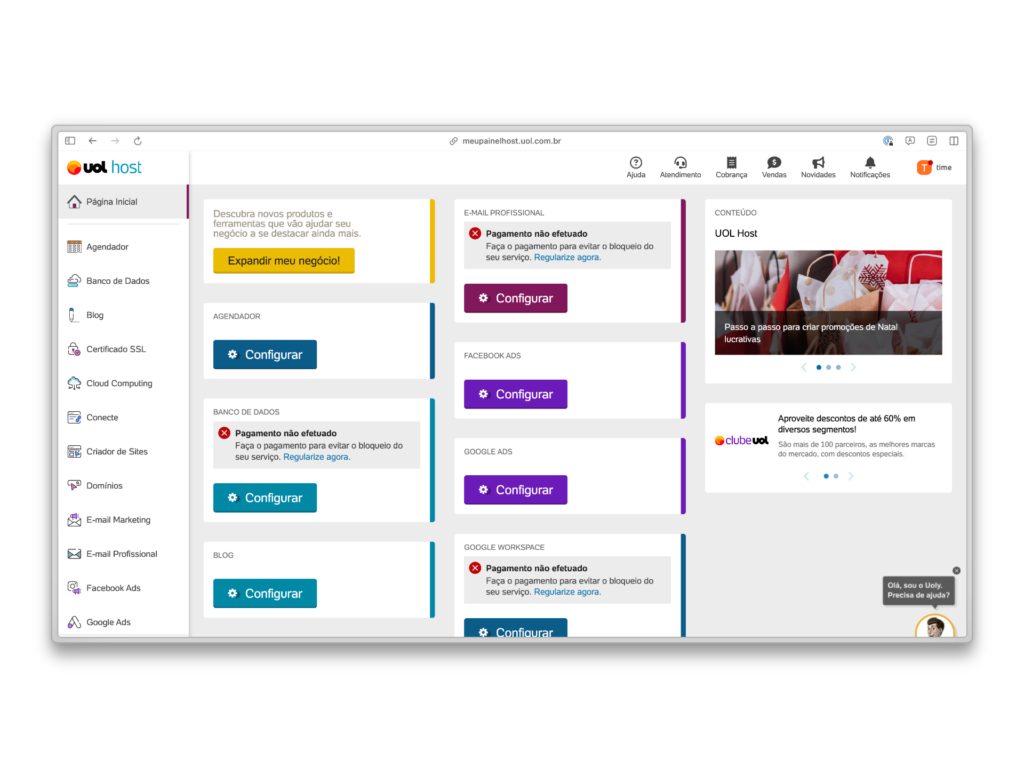Dashboard for 5+ Services
Redesigning often requires understanding historical context and navigating complex scenarios, and this project was no exception. The login area for this product served as a central hub, connecting over 5 services, which demanded coordination across multiple teams and clients. The interface was outdated, with inconsistencies in workflows and usability. Our goal was to modernize the interface and enhance the user experience.
My team and I were responsible for designing a new concept in collaboration with technical and product teams to deliver a better experience for our clients.

Impact
Role and contribution
From the beginning, I managed the project, providing support to a senior designer on my team. When the designer left, I took the lead in developing the main concept and managed several tasks until a replacement was hired to continue and further refine the project.
SKILLS: creativity . organization . strategic thinking . planing
CONTEXT
UOL, the leading Brazilian digital content, technology, and services company, has over 2.5 million subscribers and leads globally in Portuguese-language content. With over 7.4 billion monthly page views and 114 million unique visitors, it offers various services, including UOL HOST, a major market player in hosting, cloud computing, e-commerce, and domain register, supporting developers and entrepreneurs in building their online presence.
CHALLENGE
This was a large-scale project with significant challenges, particularly in terms of its impact on the business and clients. Key challenges included:
One of the greatest challenges was fostering collaboration and engagement across all teams, ensuring everyone felt part of this transformative process.
Aproach and process
Our process involved several key steps:
Learning and reflections
Managing a large project like this highlights the importance of engaging the team and co-creating with them. Designers, developers, and other stakeholders are integral to the process. Establishing a routine for regular discussions and creating a space for ongoing collaboration ensures alignment and consistency across teams. Shared documentation also helps maintain cohesive visuals, interactions, and workflows.
This isn’t my first time around the block with this dashboard either; I’ve worked with this product in many iterations. The 2017 version was the only exception. This deep familiarity allows for a more nuanced understanding of its evolution and the needs of its users.
Flexibility is critical when dealing with complex projects involving many stakeholders. A macro plan provides direction, but clear and consistent communication is essential to maintain alignment and ensure smooth progress.
It’s also important to recognize that not all projects will be released as envisioned. Challenges, especially around navigation and consistency, are inevitable. These require time, patience, and persistence. Resilience is key to overcoming frustrations and achieving the final goal.








